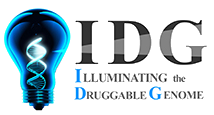Drug results: 3
| methacholine | A quaternary ammonium parasympathomimetic agent with the muscarinic actions of ACETYLCHOLINE. It is hydrolyzed by ACETYLCHOLINESTERASE at a considerably slower rate than ACETYLCHOLINE and is more resistant to hydrolysis by nonspecific CHOLINESTERASES so that its actions are more prolonged. It is used as a parasympathomimetic bronchoconstrictor agent and as a diagnostic aid for bronchial asthma. (From Martindale, The Extra Pharmacopoeia, 30th ed, p1116) |
|
| revefenacin | Revefenacin is a long-acting muscarinic antagonist, which is often referred to as an anticholinergic. It has similar affinity to the subtypes of muscarinic receptors M1 to M5. In the airways, it exhibits pharmacological effects through inhibition of M3 receptor at the smooth muscle leading to bronchodilation. The competitive and reversible nature of antagonism was shown with human and animal origin receptors and isolated organ preparations. In preclinical in vitro as well as in vivo models, prevention of methacholine- and acetylcholine-induced bronchoconstrictive effects was dose-dependent and lasted longer than 24 hours. The clinical relevance of these findings is unknown. The bronchodilation following inhalation of revefenacin is predominantly a site-specific effect. |
|
| glycopyrronium bromide | Glycopyrrolate is a long-acting muscarinic antagonist, which is often referred to as an anticholinergic. It has similar affinity to the subtypes of muscarinic receptors M1 to M5. In the airways, it exhibits pharmacological effects through inhibition of M3 receptor at the smooth muscle leading to bronchodilation. The competitive and reversible nature of antagonism was shown with human and animal origin receptors and isolated organ preparations. In preclinical in vitro as well as in vivo studies, prevention of methacholine and acetylcholine induced bronchoconstrictive effects was dose-dependent and lasted longer than 24 hours. The clinical relevance of these findings is unknown. The bronchodilation following inhalation of glycopyrrolate is predominantly a site-specific effect. |
|



